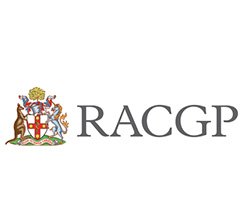Skin Clinic
What is skin cancer?
Skin cancer is a form of cancer that originates in the skin and may spread to other parts of the body. The main types of skin cancer are:
- Basal cell carcinoma
- Squamous cell carcinoma
- Melanoma (the most dangerous type)
Did you know Australia has one of the highest incidences of skin cancer in the world? About 2 out of 3 Australians will have been diagnosed with skin cancer by the time they reach 70. Most skin cancers are caused from frequent sun exposure. Many skin cancers can be successfully treated if they are detected early.
What we do
We provide skin screening for accurate early diagnosis for all types of skin cancers. In most cases, if the cancer is detected at an early stage, interventions can also be performed at Jema Clinic. Our professional and courteous staff will take care of every aspect of your care. With our emphasis on early detection and effective treatment, you can rest assured of a positive experience with Jemma Clinic.
Why have a skin check?
Our skin cancer doctors use advanced techniques and instruments to identify skin lesions or abnormalities that may be overlooked by the naked eye. Even melanomas, which are the most dangerous forms of cancer can be successfully treated in 90% of the cases if they are diagnosed and treated early. In addition to regular self-checking of your skin, an annual skin check-up by a professional at a skin clinic will help protect yourself against skin cancer.
Skin checks and treatment(Icons)
As part of your skin evaluation, our trained staff will systematically perform a whole-body skin check and generate digital dermoscopic as well as total body images. Each skin lesion or mole will then be specifically examined by a skin cancer doctor. A treatment plan may be developed, if required, for the removal of a cancerous lesion. The best long-term management and prevention strategies will also be discussed.
If you would like to book an appointment for a skin check, please click on the link below. A skin check takes about 30 minutes to complete and is usually recommended to be performed annually after 18 years of age.
BOOK A SKIN CHECKby Ozdocs BOOK A SKIN CHECKby Health Engin
If a cancerous lesion is suspected, a biopsy and subsequent wound care may be required.
SKIN CANCER BIOPSY
WOUND CARE
Skin Cancer Risk
Skin cancer is the most common form of cancer. Most of the skin cancers in Australia are formed due to overexposure to ultraviolet radiation from sunlight or other sources. To learn whether you have an increased risk of developing skin cancer please click on the link below.
Your Skin Type
Skin types can be broadly classified into:
Very fair:
- Example: Nicole Kidman
- Characteristic Features: Always burns in the sun and cannot be tanned. Hair colour is usually blonde or red and eyes are blue or green.
- Risk Factor: Very high.
- Skin Protection: Wear SPF 30+ daily and limit time in direct sunlight to 5-10 minutes.
Fair:
- Example: Hugh Jackman
- Characteristic Features: Usually burns, tans with difficulty. Eyes are usually blue or brown.
- Risk Factor: High.
- Skin Protection: Wear SPF 30+ daily and limit time in direct sunlight to 10-20 minutes.
Medium:
- Example: Matthew McConaughey
- Characteristic Features: Usually tans, but may occasionally burn. Eyes are usually blue or brown.
- Risk Factor: Medium
- Skin Protection: Wear SPF 30+ daily and limit time in direct sunlight to 20-30 minutes.
Olive:
- Example: Eva Mendez
- Characteristic Features: Tans quickly and rarely burns.
- Risk Factor: Moderate
- Skin Protection: Wear SPF 15+ daily and limit time in direct sunlight to 30-40 minutes.
Brown:
- Examples: Barack Obama
- Characteristic Features: Tans easily and rarely burns.
- Risk Factor: Low
- Skin Protection: Wear SPF 15+ daily and limit time in direct sunlight to 50-60 minutes.
Dark Brown:
- Examples: Usain Bolt
- Characteristic Features: Always tans and never burns.
- Risk Factor: Very low
- Skin Protection: Wear SPF 15+ daily and limit time in direct sunlight to 60-90 minutes.
Skin cancer prevention
As most skin cancers are caused by exposure to sunlight, it is important to protect yourself and your family from sun damage. When frequently out in the sun, you should:
- Use an appropriate broad-spectrum sunscreen depending on your skin type
- Re-apply the sunscreen every 2 hours
- Wear clothing that covers your skin such as long pants and full sleeves
- Use a broad-brimmed hat and wrap-around sunglasses
- Try to avoid the sun between 10 a.m. and 3 p.m.
- Do monthly skin self-examinations and make an appoint with a skin clinic if you notice any suspicious lesions.
Click on the link below to make an appointment.
Make an appointmentby Ozdocs Make an appointmentby Health Engin
Preventing melanoma
The fairer the skin type, the higher the risk of sun damage, which increases your risk of developing skin cancer, including melanoma. Use the following measures to reduce your risk:
- Use a reflective sunscreen containing zinc or titanium with SPF of 30+ or higher
- Avoid tanning
- Wear barrier clothing including wrap-around US sunglasses and a broad-brimmed hat
- Apply sunscreen to exposed skin 10 minutes before going outside and reapply every 2 hours while in the sun
- Have regular professional check-ups as described below:
- Every 3 months, if you have been diagnosed with melanoma in the last 2 years
- Every 6 months, if you have a history of skin cancer
- Every year, if you are over 18 years of age with no history of skin cancer
- Every 2 years, between the ages of 10 to 18 years with no history of skin cancer
BOOK AN ANNUAL SKIN CHECK APPOINTMENTby Ozdocs BOOK AN ANNUAL SKIN CHECK APPOINTMENTby Health Engin
Sunspot danger signs
Sunspots are flat brown spots that show up on your skin due to overexposure to sunlight. These spots may regress and fade with time or may change into something more harmful. About 65% of squamous cell carcinomas, a type of skin cancer, develop from previously diagnosed sunspots in high-risk individuals.
Be aware of the following danger signs, which may require treatment:
- The skin in and around the sunspot becomes thicker
- The sunspot becomes painful to touch
- The sunspot grows rapidly
- The sunspot is more than 1 cm in size
- The sunspot turns red in colour
- The sunspot starts bleeding
- The sunspot transforms into an ulcer
If you notice any of the above changes on your skin, you should be evaluated by a skin specialist.
Book a Skin Check Appointmentby OzdocsBook a Skin Check Appointmentby Health Engin
Our Services
The services we provide for the treatment of skin cancer include:
- Accurate diagnosis of suspicious skin moles: Our skin cancer doctor is an accredited skin cancer doctor who is able to recognise suspicious skin lesions such as actinic keratosis, atypical moles, basal cell carcinoma and melanoma.
- Patient education on skin cancer warning signs: As an early diagnosis greatly improves the outcomes of skin cancer treatment, we advise our patients on the physical characteristics to watch out for and how to protect yourself and your family members from risk factors for skin cancer.
- Complete head-to-toe skin examination: Our skin doctors perform a thorough examination of your skin from head to toe. All suspicious lesions will be examined under magnification using special instruments such as a dermatoscope.
- High-resolution total body photography: A complete visual record of your skin surface will be made taking a standardised set of photographs to document all the skin lesions present on your body.
- Sequential digital dermoscopic imaging: Obtaining regular images of your skin lesions at short-term intervals is the best strategy to identify very minute changes in a lesion, which may signal the development of cancer. Once identified, an appropriate treatment plan can be developed to optimally manage the lesion.
Our Process
We follow a step-wise process to ensure early detection which is the key to successful skin cancer treatment:
- Initial consult: The doctor will listen to your concerns and record your complete clinical history.
- Skin mapping: A full body scan will be done to detect every skin lesion in detail. This includes moles, colour changes, dry skin and much more. High definition images are taken by a computerised process for reliable reportability. Areas of suspicion are focussed on with full 4K brilliance.
- Storing your vital skin information: All the data collected, including the images of your skin, are stored in your unique database and can be referred to as required.
- Diagnosis: Your doctor reviews all your images as well as computerised models that are generated based on your data to establish an accurate diagnosis. Internationally recognised analytical methods are used to classify borderline lesions.
- Risk factor assessment: Based on your history and your examination, your doctor will make an assessment of your risk of developing skin cancer and determine what precautions may need to be taken.
- Plan of action: Following a comprehensive evaluation, diagnosis, and risk assessment, your doctor will recommend a plan of action that will be best suited to your skin condition.
Your skin clinic journey
At every stage of your journey towards optimal skin health, you can be sure Jema Clinic will provide you the best and most advanced technology and the highest level of expertise right from the initial computerised digital scanning and diagnosis to interventions and follow ups including annual check-ups.
Follow-up skin check process
Follow-up skin checks are very important to monitor any borderline lesions that might turn malignant as well as to look for new lesions. The follow-up skin check process has the following salient features:
- Comparing the new high-quality images with previous images stored in your unique database.
- Images can be magnified up to 200 times so that no facet or important information on your skin is overlooked.
- A computerised process that identifies any minute skin changes to assist in early detection
- Documents any improvement in skin condition following intervention
- Sequential images and examinations help your doctor quickly identify and diagnose skin cancer as well as provide an effective intervention. Annual Skin Checks with Digital Mapping
Besides using sun protection, early detection is the key to treating melanoma and other skin cancers. Annual skin checks with whole body digital mapping stores high quality images of your skin in digital format for review at subsequent annual visits. Computer-aided comparison is the most accurate way to detect skin changes that might be an early sign of cancer.
Please click on the link below to make an annual appointment.
Annual skin check appointmentby OzdocsAnnual skin check appointmentby Health Engin















